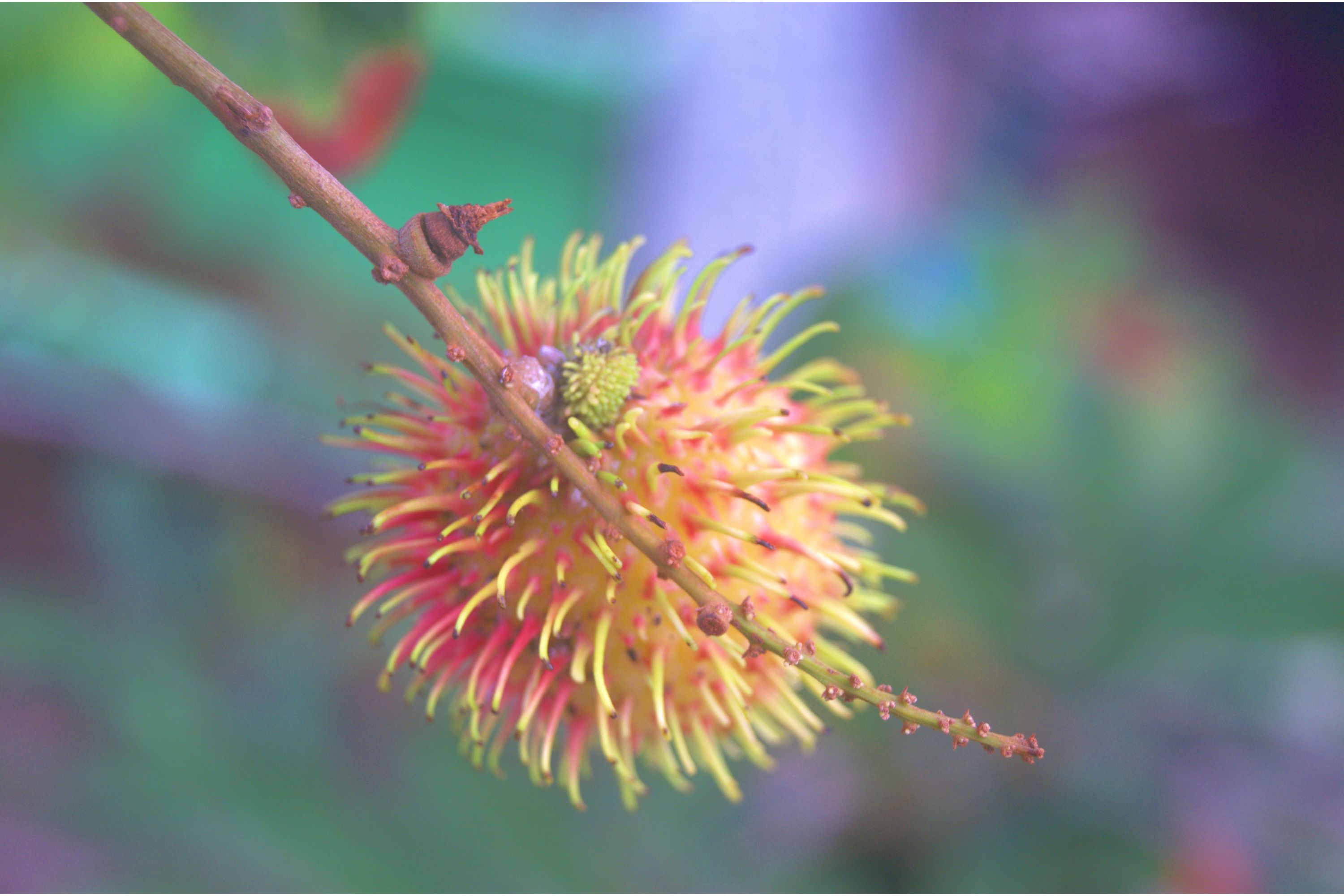Rambutan
(Nephelium lappaceum)

Description
Rambutan (Taxonomic name: Nephelium lappaceum) is a medium-sized tropical tree in the family Sapindaceae. The name also refers to the edible fruit produced by this tree. The rambutan is native to Southeast Asia. It is closely related to several other edible tropical fruits including the lychee, longan, pulasan and mamoncillo. The name "rambutan" is derived from the Malay word rambut meaning 'hair' referring to the numerous hairy protuberances of the fruits, together with the noun-building suffix -an. Similarly, in Vietnam, they are called chôm chôm (meaning 'messy hair'). It is an evergreen tree growing to a height of 15–20 m. The leaves are alternate, 14–30 cm long, pinnate, with three to 11 leaflets, each leaflet 5–15 cm wide and 3–10 cm broad, with an entire margin. The flowers are small, 2.5–5 mm, apetalous, discoidal and borne in erect terminal panicles 15–30 cm wide. Rambutan trees can be male (producing only staminate flowers and, hence, produce no fruit), female (producing flowers that are only functionally female) or hermaphroditic (producing flowers that are female with a small percentage of male flowers). The fruit is a round to oval single-seeded drupe, 3–6 cm (rarely to 8 cm) long and 3–4 cm broad, borne in a loose pendant cluster of 10–20 together. The leathery skin is reddish (rarely orange or yellow) and covered with fleshy pliable spines, hence the name, which means 'hairs'. The spines (also known as "spinterns") contribute to the transpiration of the fruit, which can affect the fruit's quality. The fruit flesh, the aril, is translucent, whitish or very pale pink, with a sweet, mildly acidic flavor reminiscent of grapes. The single seed is glossy brown, 1–1.3 cm, with a white basal scar. Soft and containing equal portions of saturated and unsaturated fats, the seeds may be cooked and eaten, but is bitter and has narcotic properties. Aromatic rambutan flowers are highly attractive to many insects, especially bees. Flies (Diptera), bees (Hymenoptera) and ants (Solenopsis) are the main pollinators. Among the Diptera, Lucilia spp. are abundant and among the Hymenoptera, honey bees (Apis dorsata and A. cerana) and the stingless bee genus Trigona are the major visitors.
Taxonomic tree:







